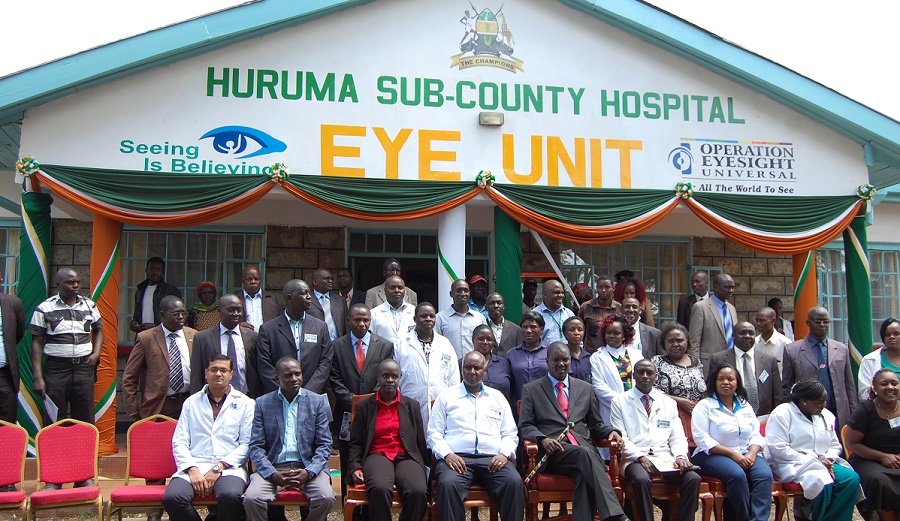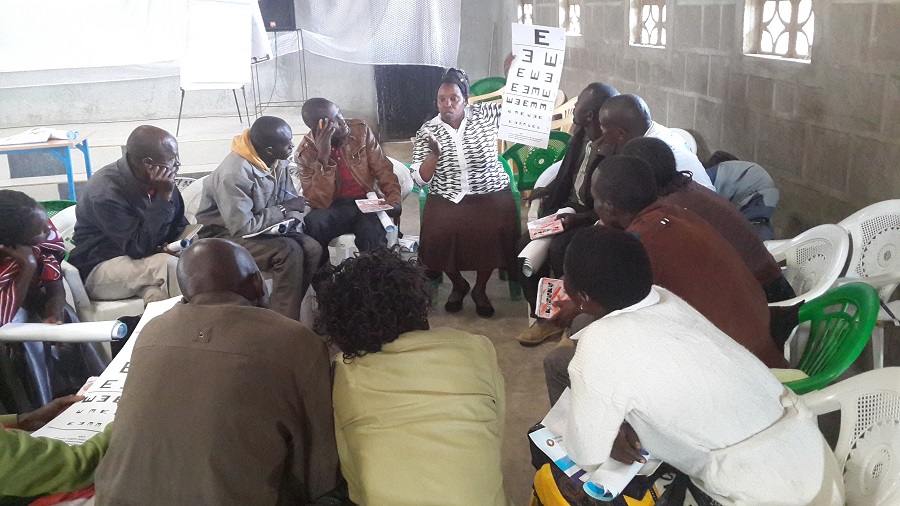Join a powerful, unprecedented alliance for better eye health for all.
Join IAPB-
Choose an alternate language here

With the support of Seeing is Believing, Operation Eyesight has completed a four-year Phase V project to strengthen the quality of eye care delivery in the Rift Valley region of Kenya. Through partnerships with the Ministry of Health and county departments from six counties, the Rift Valley Region Prevention of Blindness Project targeted three main objectives: to ensure quality and sustainable eye care services were available to residents of the area; to build the capacity of primary, secondary and tertiary facilities to provide quality eye care; and to work with governments to integrate primary eye care into the public health system, starting with a strong primary eye care network in this region. The project was designed to prepare the hospital to provide sustainable services following the completion of the donor-funded project.
At the start of the project in 2014, most of our partner hospitals were inadequately equipped and suffered from an acute shortage of personnel, a limited supply of medication for common eye diseases and weak ties to the community. Even if the supply of quality health care services had been in place, the demand was missing. People in the area were not seeking eye health care due to a number of factors, including inadequate knowledge about eye diseases, superstitions and negative cultural beliefs, low prioritization of eye health, lack of affordability and poor mobility among elderly people.
By the completion of the project, equipment had been permanently upgraded in all eight hospital eye units. In collaboration with hospital management, human resources gaps were identified and addressed to build capacity of the facilities. Training was provided to six new ophthalmic clinical officers/cataract surgeons and 11 new ophthalmic nurses. In addition, 436 general health workers were trained in primary eye care, and existing employees were trained to update or refresh their skills. As salaried government staff, these employees will continue to provide eye care services into the future, beyond the funding of this project. To promote effective eye health-seeking behaviour at the community level, 1,682 community health volunteers were trained to screen and counsel people and provide demand for the enhanced eye care services available as a result of this project.

Advocacy has played a critical role in ensuring the long-term sustainability of the project. Prior to the start of the project, our partner facilities were receiving few supplies from the county. The support of Seeing is Believing gave us traction to negotiate with the county to subsidize surgery costs and increase allocation from the government towards eye medication and other supplies. From inception of the project through to implementation and evaluation, the county governments were actively involved. Because this project was embedded in the Kenya Ministry of Health structure, the resulting improvements to disease control and human resources for eye health will continue to benefit this region well into the future.
The evaluation report carried out at the end of the project concluded that it had been implemented in line with the National Strategic Plan for Eye Health and Blindness Prevention (2012-2018), and in accordance with the core strategies of VISION 2020. The project strengthened the capacity of primary, secondary and tertiary facilities to provide quality eye care services and reached out to the surrounding communities to promote the importance of proactive eye health care.
Six months after funding from SiB ended for this project, the programme continues to provide quality eye care services to more people thanks to the involvement and ownership of the county government and local eye health teams. The implementation of sustainable programmes like this one is the first step towards eliminating avoidable blindness permanently – For All The World To See!
Alice Mwangi
Country Manager – Kenya